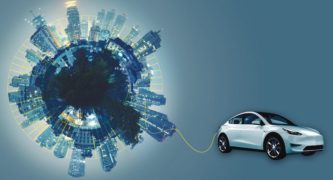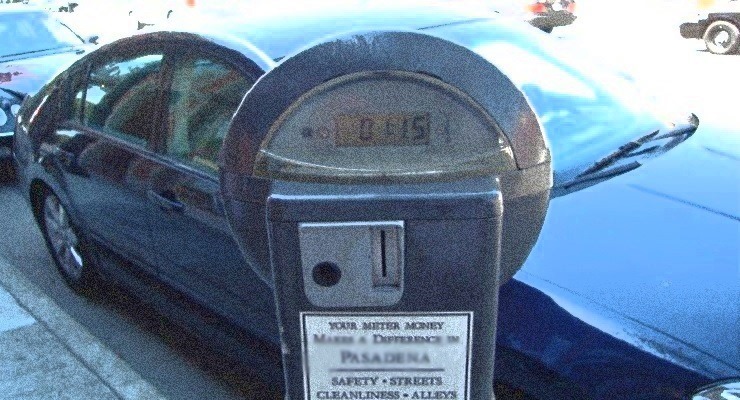
California’s energy grid, an engineering marvel 150 years ago, is due for a makeover. Now, thanks to an interdisciplinary group of researchers, Caltech is working to transform energy systems by developing a “smart grid”: a flexible, responsive, efficient, system that incorporates renewable energy sources while meeting growing power demands.
Californians increasingly are experiencing the effects of climate change, from drought and water shortages to extreme heat. These challenges highlight the urgent need to transition away from greenhouse gas-emitting fossil fuels and toward renewable energy sources such as wind and solar. In 2018, California committed to supplying electric customers with 100 percent renewable and zero-carbon energy sources by 2045.
A crucial step in that transition is restructuring the power grid, the complicated network of hardware and software that brings electricity to our doorsteps. With support from public and private partners, Caltech engineers, economists, mathematicians, and computer scientists are devising and testing the underpinnings of tomorrow’s grid. Their advancements include everything from the creation of intuitive algorithms and hardware that ensure that electrical vehicle (EV) charging stations draw power when it is cheap and abundant to the establishment of new economic structures that prevent market players from manipulating energy prices.
“A lot of the infrastructure has already reached a place where it can be integrated and implemented,” says Adam Wierman, professor of computing and mathematical sciences. “There are smart devices for sensing and communication, and solar and wind are cost competitive. That means that there will be progress in the short term. The question is when we will hit this wall where the current architecture stops being enough—where power outages start to become more likely, when costs start to go up. Our research is targeted on getting through that wall, so that when you get there, you can still progress.”
Yesterday’s Electrical Grid
Conventional grids have relied on coal-fired or nuclear power stations located near areas of high electricity demand. Renewable energy generation systems, like solar panels and wind turbines, are often located in open spaces far away from urban areas, thus creating the need for more storage (e.g., pumped hydroelectric energy storage or batteries) and greater transmission capability (e.g., power lines).
The grid also was designed to distribute a steady and predictable flow of electricity created by burning fossil fuels on demand. Renewable power from wind and solar fluctuate depending on weather and are difficult to predict. Without long-term, large energy storage, this can result in an imbalance between the amount of electricity produced and the amount needed at any given time.
Compounding these challenges is the expectation that electricity demand will soar as more people drive electric vehicles and install electric appliances in an effort to decarbonize. The grid of the future must be able to grow to accommodate this increased demand.
Caltech Smart Grid Solutions
When energy supply is less predictable, energy demand needs to be more flexible to avoid overtaxing the grid. Smart scheduling—pulling power from the grid when renewable energy is available—could make the grid more compatible with the variability of wind and solar power.
Caltech researchers have developed mathematical tools that determine when to use and when to conserve power based on the energy available on the grid. These tools solve the problem of how to stabilize voltages on the grid even when energy from renewable sources fluctuates. This new approach can be applied to the distribution networks that take power from larger substations and deliver it to houses, buildings, streetlights, and other energy consumers in a region.
With a smart scheduling-enabled grid, you could signal to your dishwasher whether you need dishes right away, or if the job could wait a few hours until the grid is less stressed. The enormous data centers run by Google, Amazon, and other companies could initiate energy-intensive activities, such as the archiving of data, only when solar and wind energy are available.
Caltech already has launched a solution aimed at a significant consumer of energy: EVs. Steven Low, Frank J. Gilloon Professor of Computing and Mathematical Sciences and Electrical Engineering, former Caltech graduate student George Lee, and former Resnick Sustainability Institute Graduate Research Fellow Zachary Lee invented the Adaptive Charging Network, a smartphone-enabled platform that parking garages can use to maximize the efficiency of EV charging stations. For example, one person may leave their EV parked for a full workday but need relatively little energy to top off the battery. That person could wait until late in the day, when energy is more available and cheaper, to charge. Another individual, who needs to charge before driving to a lunchtime meeting, could begin to receive electricity immediately. This technology, licensed through a company called PowerFlex, is now operating in Caltech’s parking structures and is being deployed nationwide.
But smart scheduling alone is not enough. A grid that runs on renewable energy also requires a major overhaul in how the grid is managed and regulated.
Today’s electrical grid relies on a centralized approach, meaning all data are collected and control decisions are made at a central management center to make sure enough electricity is directed to where it is needed. The smart grid, on the other hand, uses a decentralized approach, in which everything from dishwashers to data centers can interact with and glean information from the grid to optimize energy use without human intervention. This requires new algorithms designed with cybersecurity threats in mind from the outset.
Today’s system also uses markets that predict customer electricity demand a day ahead of time, which allows power plants to generate and sell enough power to meet that demand. This market structure doesn’t work when fluctuating renewables come into play. Caltech researchers, like Wierman, are doing theoretical work looking at the smart grid and the network of markets it will produce. One potential problem is that renewable-based markets open the door for companies to manipulate prices by turning off generators. Whereas the operational status of a normal generator can be monitored, solar and wind power make it nearly impossible to verify how much electricity should have been produced because it is difficult to know whether it was windy or sunny at a certain time. Wierman is creating market designs that would reduce that risk.
Caltech’s hometown of Pasadena is a convenient laboratory for the Institute’s smart-grid researchers: The city has promoted the use of solar panels and EVs, providing a real-world, real-time example of the challenges that come with incorporating renewables into a conventional grid. Caltech is working with Pasadena Water and Power on a project to strategically install and program batteries that could store solar and wind energy for use when energy supply is low.
“Engineering grand challenges are inspiring much of the research at Caltech, especially in the broad area of sustainability,” says Harry Atwater, Otis Booth Leadership Chair of the Division of Engineering and Applied Science, Howard Hughes Professor of Applied Physics and Materials Science, and director of the Liquid Sunlight Alliance. “Inventing and developing technologies to accelerate the transition to a sustainable energy infrastructure forms a large part of our research portfolio—our faculty, students, and alumni are at the forefront of solving large-scale problems that will have long-term impact.”














 1 comment
1 comment


